14 Bleak Aspects of the “Golden” Age of Hollywood
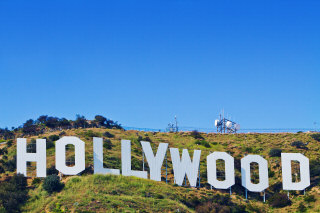 The Golden Age of Hollywood was an early stage of the cinematic industry in
America. In retrospect, many often observe the era as being one of the greatest
and most important eras of the big screen. It is seen as epitomizing the essence
of film as it was primarily concerned with the “magical” and escapist nature of
the art form. Furthermore, it’s regarded as an era in which the film industry
was wholesome, ingrained with deep-seeded social values and noble ambitions. The Golden Age of Hollywood was an early stage of the cinematic industry in
America. In retrospect, many often observe the era as being one of the greatest
and most important eras of the big screen. It is seen as epitomizing the essence
of film as it was primarily concerned with the “magical” and escapist nature of
the art form. Furthermore, it’s regarded as an era in which the film industry
was wholesome, ingrained with deep-seeded social values and noble ambitions.
However, much like the glitz and glamour of Hollywood today, the opulence and
optimism that the Golden Age ostensibly embodied, merely belied a much darker
and harsher side. In reality, the Golden Age was rooted in draconian rules,
exploitation and opportunism on scale that even by today’s standards is
horrifying.
History
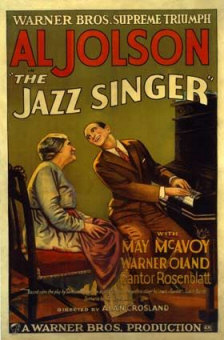 The Golden Age (otherwise referred to as the "studio era") spanned a portion
of the silent era through to the early 1960s. It is generally believed to have
begun in 1927 with the debut of ‘The Jazz Singer’, as it was the first motion
picture to feature synchronized sound in a small portion of the film. The Golden Age (otherwise referred to as the "studio era") spanned a portion
of the silent era through to the early 1960s. It is generally believed to have
begun in 1927 with the debut of ‘The Jazz Singer’, as it was the first motion
picture to feature synchronized sound in a small portion of the film.
It was a phenomenally productive era, with the industry producing twice the
number of films that are made today. However, while there were some classic
films made during the era – the original ‘Scarface’ (1932), ‘Arsenic and Old
Lace’ (1944), ‘Dial M for Murder’ (1954) etc. – the industry was primarily
interested in quantity rather than quality.
Perhaps the most significant contribution that the era made to the film
industry was the narrative structure – a formula for film production that
simplified the story-telling and character development of a film. Narratives
were essentially broken up into three distinct sections – the beginning, middle
and end. And there was always a satisfying ending. This formula proved to be the
key to the success of the industry and is still commonly utilized in the films
of today.
During the era, a meticulously tuned system was established that enabled
Hollywood studios to operate the film industry like a factory that gave
Hollywood executives incredible (and alarming) power and influence over both
those they employed and even the society that they entertained.
14) Death of Vaudeville
The vaudeville genre of entertainment – that included jugglers, animal acts,
comedic sketches that were popular in silent film – was immediately and
devastatingly affected by the advent of the sound in film and the subsequent
Golden Age of cinema.

The genre was unable to compete with “talkies”, as
audiences were enamored with the novelty of sound in film, which thereby made
vaudeville entertainment seem dated and stale. While many vaudevillian actors
tried to re-establish themselves in film, few succeed.
13) Careers Ruined
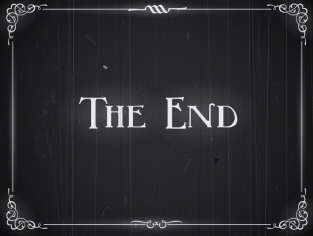 Numerous actors had their respective careers ruined with the advent of sound
in films, as they were either unprepared or quite simply unsuited for the
climatic shift in the industry. Some actors and actresses had grainy or strange
voices, thick accents or simply had difficulty memorizing line – as they had
never been called upon to do so in the past. In at least a few cases, silent
stars who couldn’t adapt to talkies, were replaced by a lucky few vaudevillian
actors and in some cases even radio actors. Numerous actors had their respective careers ruined with the advent of sound
in films, as they were either unprepared or quite simply unsuited for the
climatic shift in the industry. Some actors and actresses had grainy or strange
voices, thick accents or simply had difficulty memorizing line – as they had
never been called upon to do so in the past. In at least a few cases, silent
stars who couldn’t adapt to talkies, were replaced by a lucky few vaudevillian
actors and in some cases even radio actors.
Pianists were perhaps hit hardest of all, as thousands lost their livelihood
when the industry switched to sound, when their talent was no longer required to
provide the background music to accompany silent films.
12) Monopolization of the Industry
Many small studios simply didn't have the finances to convert to sound, which
put them significantly behind the rest of the industry. Many went bankrupt,
thereby solidifying the dominance of the "Big Eight" studios in Hollywood. The
studios were thus able to exploit the novelty of sound.

Hollywood studios were one of the few industries that successfully managed to
avoid the impact of the Great Depression, as they cashed-in on the opportunity
to deliver to the nation escapist entertainment when it was most needed.
11) The Studio System
The key to the success of Hollywood's studios during the Golden Age was the
"studio system". While it had started in the Silent Age, it didn’t truly succeed
until the Golden Age. The system was heavily invested in the principle of
vertical integration. The “Big Five” studios were Paramount, MGM, Fox, RKO and
Warner Bros. Each had their own chain of theaters that guaranteed distribution
for their films.
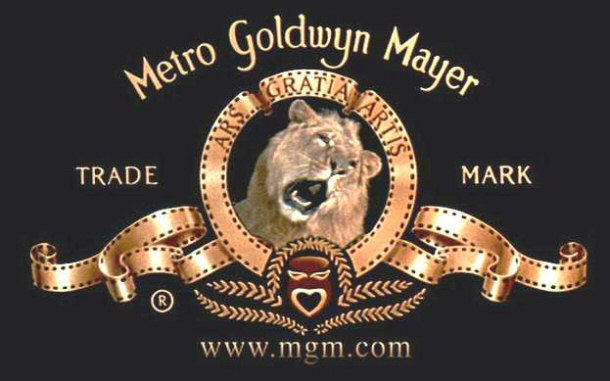
In contrast, the “Little Three” studios, which consisted of Columbia
Pictures, Universal and United Artists, only had a significantly smaller number
of theaters. This left them to rely heavily on independent theaters to support
their films.
In a number of instances, one of the Big Five studios would own every single
theater in a single city or town. Paramount at one point owned every theater in
Detroit.
10) Block Booking
The practice of "block booking" was a key to the studios success and
dominance. Studios would sell theaters a year's worth of films. The films in
question would consist of big-budget movies, coupled with a number of low-budget
“B-movies” of questionable quality. Basically, block-booking allowed studios to
get lazy (and cheap), as the theaters were legally obligated to show whatever
the studios gave them.
Robert Montgomery - Former Head of Screen Actors Guild -
Testifying at a Senate Hearing on Block-Booking in 1939
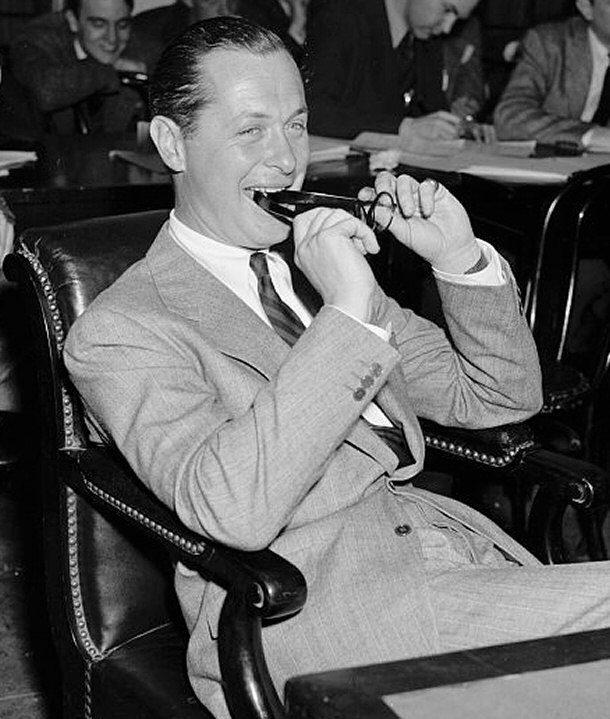
While some classic films were produced during this era,
studios only made and distributed enough to get people in the theaters in the or
in the first place. The majority of the films that the studio delivered were of
mediocre quality.
9) Diminished Content
Due to the studio’s success with block-booking, the quality and variety of films
suffered significantly. At the beginning of the Golden Age, the film industry
was made up of a variety of mediums, including film serials, shorts, newsreels,
animation, comedies and musicals.
Advertisement For Titanic Newsreel April 26, 1912
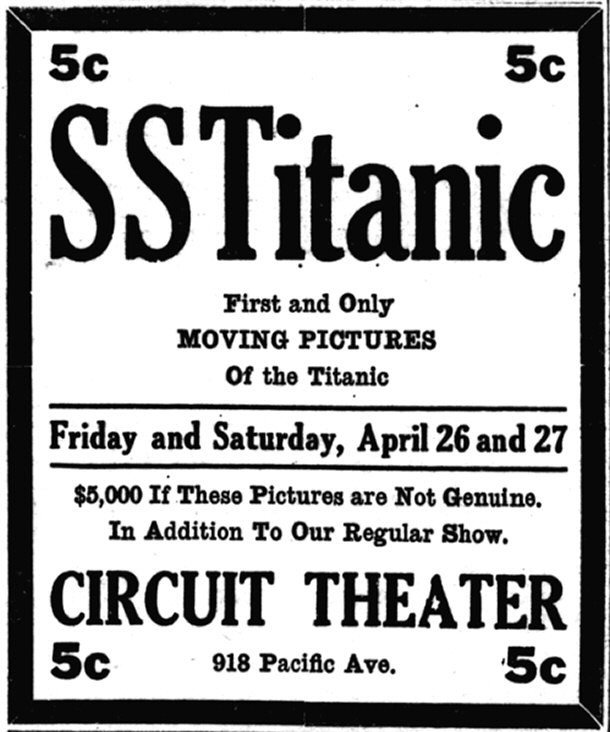
Furthermore, there was also a higher degree of
quality. Much of this content had all but disappeared by the 1940s, replaced
with double feature films, which usually consisted of one big-budget film,
coupled with a low-budget B-movie.
8) The Star System
Another key aspect of the Golden Age was the "star system". Basically, actors
were employees of the studios and essentially just property. The studios would
seek out individuals based on appearance and potential. They would then be
re-designed by the studio and given heavily contrived public images and often
changing their names to something more Hollywood – for example, Lucille LeSueur
and Archie Leach were re-named Joan Crawford and Gary Grant, respectively. In
some cases, individuals were coerced into getting cosmetic surgery, by way of
making them marketable. In an alarming racist trend, many Jewish actors and
actresses were forced to have nose-jobs to effectively remove traces of their
ethnicity.

Studios would decide what movies actors and actresses appeared in. Stars had
absolutely no say over the roles they were given. Celebrity couples were even
more contrived than they are today. Studios would order stars to date one
another for the sake of publicity. Such “relationships” were also utilized to
detract attention and hide a star’s sexuality if they happened to be gay.
7) Standardization
Contractually-bound to studios, directors were treated only mildly better
than stars. They were forced to make whatever picture they were assigned, thus
leading to decent directors producing mediocre films, as the film-making process
was regarded as nothing more than a production line.
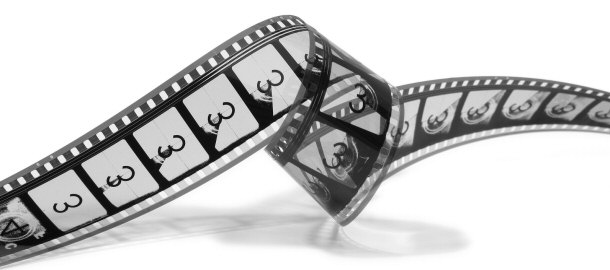
Such standardization of
films was so prevalent that each individual studio inadvertently established
their own unique "style" in terms of their films’ aesthetic.
6) Morality Clauses
Star contracts routinely came with mortality clauses, which effectively kept
stars (in theory) from what were seem as unsavory indulges in the private lives
such as drugs, alcohol, affairs or even divorce. Studios thought that such
behavior would ruin a star’s image, make them unprofitable and reflect badly on
the studios. Essentially, stars were expected to act like proper ladies or
gentlemen off set.

One farcical instance of studio intervention into the lives
of their stars, was when Loretta Young fell pregnant to her married co-star,
Clark Gable. Young hid the pregnancy, before giving her child up for adoption.
Young then officially adopted her child, thus cover-up the pregnancy and
enhancing her public image.
 5) Cover-Ups 5) Cover-Ups
Cover-ups were the norm in the Golden Age. If a star failed to live up to
their expectations and break their clauses (as was often the case), controversy
was usually avoided with the payment of hush-money to any witnesses or exclusive
interviews given to tabloids. Sexual assaults and subsequent cover-ups were
horrifyingly common.
David Stenn’s documentary, ‘Girl 27’ (2007), documents two such cases. In
1937, while performing at a party attended by studio executives, teenager and
film extra Patricia Douglas was raped by a salesman for MGM and forced to leave
the industry after the subsequent character assassination, harassment and
cover-up. Singer, Eloise Spann committed suicide after being assaulted under
circumstances similar to Douglas’.
4) Executive Meddling
Nowadays, the “Auteur Theory” of film making is the norm. This is an attitude
that the director is solely responsible for the success of a film, as they have
creative control over the whole project. Certainly, studio executives today
meddle with a film’s final cut and can sometimes alter a film dramatically from
the director’s original vision, but current-day executive meddling is nothing
like it was during the Golden Age, when executives had a say over everything.
Orson Wells as Citizen Kane in 1941
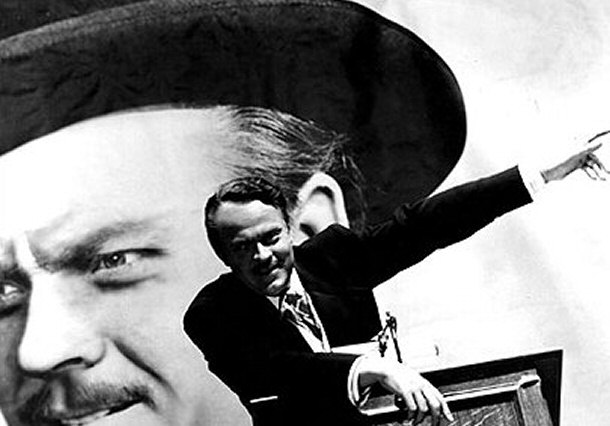
Creative visionaries of the era, such Orson Wells and Alfred Hitchcock often
struggled against the restrictions of the studio, despite being masters of their
art form.
3) Censorship
During the Golden Age, there was a moral code of conduct, known as The Hays
Code, which was introduce in 1930 and strictly enforced from 1934 onwards. It
was a set of rules that dictated what content was “appropriate” in film. The
code lasted for 30 years, placing severe restrictions of directors and stars’
creativity.

The core principles of the code were that a film shouldn’t sully the
morality of the audience, glorify criminal behavior or celebrate or mitigate the
seriousness of sin. Laws were also considered beyond reproach. On a more absurd
note, films were also forbidden to show footage of actual child-birth, whites
victimized by slavery, surgical operations or men and women (even married
couples) in the same bed.
2) Ridiculously Happy Endings
With the obvious exception of ‘Gone With the Wind’ (1939), ‘Casablanca’
(1942) and a handful of other films, movies during the Golden Age routinely had
happy – often fanciful, fairytale-like – ends. This was due in part to audience
expectations and the need for escapism (as the Golden Age spanned the Great
Depression and WWI and WWII) but was also (and largely) due to the absurd
restrictions of The Hays Code.
Gone With the Wind - 1939
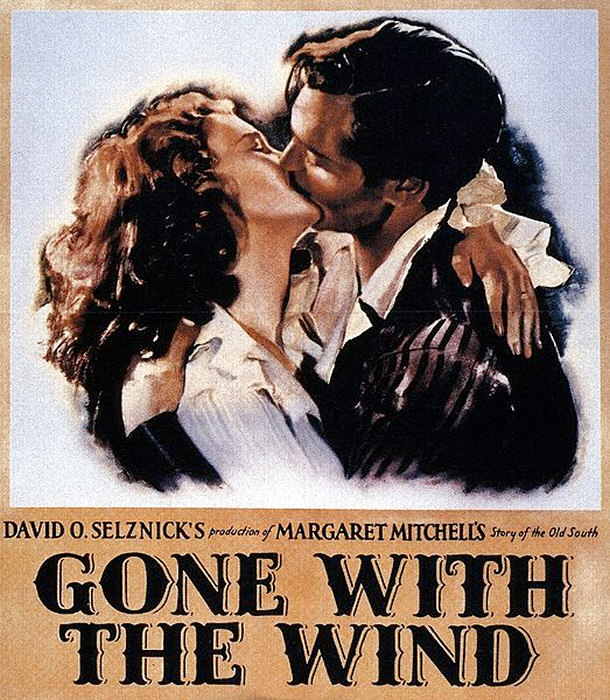
The code, coupled with demands of executives, led
to a strict formula when it came to film making. While there wasn’t necessarily
anything inherently wrong with the formula, it was almost invariably
predictable, boring and unimaginative, given the censorship restrictions. ‘It
Happened One Night’ (1934) epitomized such saccharin myopia as it was the first
film (or at least the first significant film) to feature a ran-away bride –
running to the arms of the man she has only known a short while but who is
clearly the love of her life. Such fanciful storylines would become the norm
throughout the era and would have such an impact that it is still seen in the
films of the current day and age.
1) Lacking Artistic Merit
With directors essentially forced to always end on a happy note and adhere to
a draconian code of practice, few films from the Golden Age embodied legitimate
artistic merit. Even the few that did were still marred by the rules they had to
follow. One of the great films of the ear was ‘On the Waterfront’ (1954) about a
dock worker who stands up against organized crime.
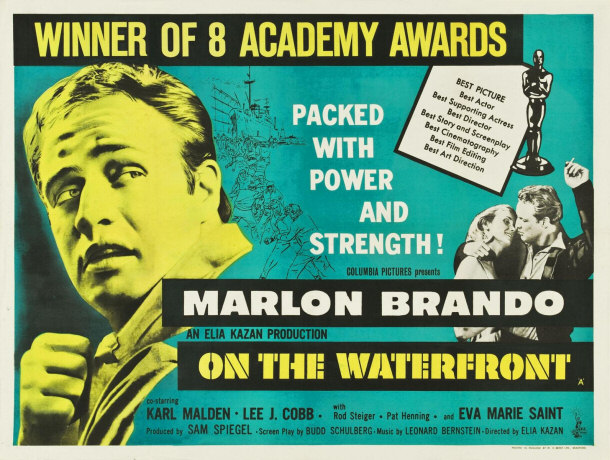
As greats as the film is, it
could have been even better. The film was based on ‘Crime on the Waterfront’
which was a variety of articles by Malcolm Johnson for the New York Sun. While
the film ends on a positive note with the protagonist confronting and winning
against organized crime, the ending is far from realistic. In reality, if a man
stood up to the organized they’d end up dead, dismembered in a tub of full of
cement at the bottom of the sea. But such realism was considered inappropriate.
Conclusion
Understandably, many in Hollywood were displeased with the studio system,
particularly in regards to creative freedom. Few had the influence and/or power
to make a difference. In 1919, creative cornerstones of the industry, such as
Douglas Fairbanks, Charlie Chaplin, Mary Pickford, and D.W. Griffith established
the studio United Artists. This was an attempt to control their respective art
and careers while subverting the ingrained studio system.
In the 1930s, the main unions of the film industry protested the exploitation
of actors, writers and directors. The studios had regarded the revolt by their
employees as an instance where the inmates were taking over the asylum. However,
the efforts of the early artists who stood up for their rights against the
brutally opportunistic, draconian and invasive practices of Golden Age of
cinema, ultimately led to the creative freedom that those in the industry enjoy
today – and often take for granted.
Movies
Top Lists:
Top 15 Most Amazing Movie Theaters in the United States
14 Bleak Aspects of the “Golden” Age of Hollywood
10 Darkest Animated Films Ever Made
Informational:
The Role of a Director of Photography
Why the Film Industry Usually Ruins Cinematic Adaptations |